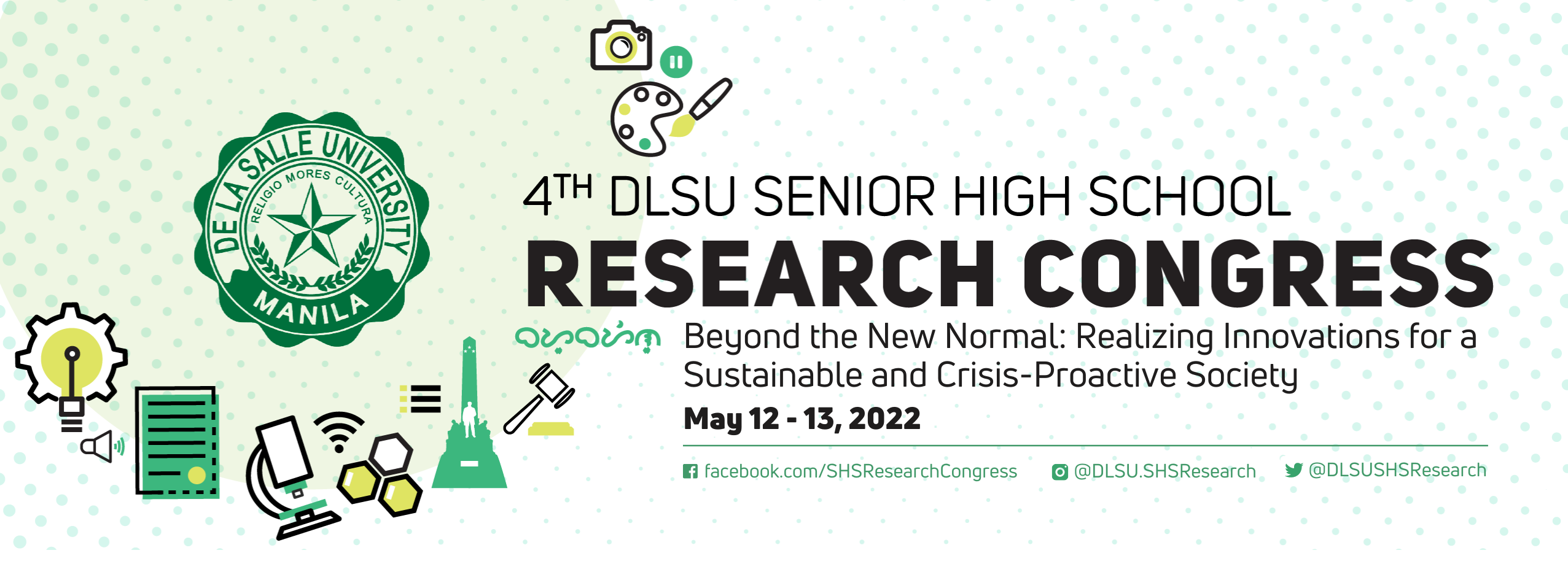Document Types
Poster Presentation
Research Advisor (Last Name, First Name, Middle Initial)
Methozela P. Iligan
Start Date
12-5-2022 3:30 PM
End Date
12-5-2022 5:30 PM
Abstract/Executive Summary
A supportive healing environment is defined as a nurturing and therapeutic setting (Sakallaris et al., 2015). This study aimed to determine the quality of supportive healing environments in the interior design of isolation facilities based on the level of satisfaction of recovered COVID-19 patients. The following objectives guided the study; to determine the quality of supportive healing environments in the interior design of isolation facilities in terms of stimulating design features, complexity and coherence, social support enhancement, and connection to nature. Also, it aimed to determine if there is a significant difference in the quality of supportive healing environments in terms of the said four categories when each is grouped according to sex, age group, and type of facility. The study employed a descriptive and comparative research design where researcher-made survey questionnaires were given to 101 legal-aged participants via snowball sampling technique in Bacolod City. The findings revealed that the quality of stimulating design features, complexity, coherence, and social support enhancement all received a moderate level of satisfaction with mean scores of 3.27, 3.4, and 2.74 respectively, whereas the quality of connection to nature received a high level of satisfaction with a mean score of 3.53. Mann-Whitney U test revealed no significant difference in the quality of supportive healing environments in terms of the mentioned four categories in the interior design of isolation facilities based on the level of satisfaction of recovered COVID-19 patients when grouped according to sex, age group, and type of facility.
Keywords
supportive healing environment; stimulating design features; complexity and coherence; social support enhancement; connection to nature
Research Theme (for Paper Presentation and Poster Presentation submissions only)
Sustainability, Environment, and Energy (SEE)
Included in
Revealing Quality of Supportive Healing Environments in Interior Design: Recovered COVID-19 Patients’ Level of Satisfaction in Isolation Facility Design
A supportive healing environment is defined as a nurturing and therapeutic setting (Sakallaris et al., 2015). This study aimed to determine the quality of supportive healing environments in the interior design of isolation facilities based on the level of satisfaction of recovered COVID-19 patients. The following objectives guided the study; to determine the quality of supportive healing environments in the interior design of isolation facilities in terms of stimulating design features, complexity and coherence, social support enhancement, and connection to nature. Also, it aimed to determine if there is a significant difference in the quality of supportive healing environments in terms of the said four categories when each is grouped according to sex, age group, and type of facility. The study employed a descriptive and comparative research design where researcher-made survey questionnaires were given to 101 legal-aged participants via snowball sampling technique in Bacolod City. The findings revealed that the quality of stimulating design features, complexity, coherence, and social support enhancement all received a moderate level of satisfaction with mean scores of 3.27, 3.4, and 2.74 respectively, whereas the quality of connection to nature received a high level of satisfaction with a mean score of 3.53. Mann-Whitney U test revealed no significant difference in the quality of supportive healing environments in terms of the mentioned four categories in the interior design of isolation facilities based on the level of satisfaction of recovered COVID-19 patients when grouped according to sex, age group, and type of facility.


